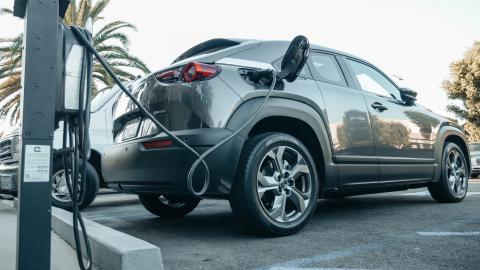The Biden administration has taken significant executive actions this summer to address what it perceives as an urgent climate crisis. In rapid succession, it announced major regulatory initiatives by the Environmental Protection Agency to cut power plant greenhouse gas emissions and one drastically curtailing vehicle tailpipe emissions. Across the Mall, the Department of Energy was planning additional efficiency standards to wean Americans from natural gas furnaces. In an about-face, the Biden Department of Justice suddenly announced its support for a limited federal role in energy by asking the 9th Circuit of Appeals to rehear a prior case in which it said that Berkeley, California’s decision to ban gas stoves was preempted by federal law.
These events should be troubling as the administration seems willing to cast aside established regulatory and legal principles in favor of political expediency. While each is troubling, consumers should pay particular attention to the innocuously named tailpipe emission standard. Over time both Republican and Democratic administrations have sought to improve mileage while simultaneously reducing emissions. Gone are the days of leaded gasoline and high-sulfur diesel. Emissions equipment and catalytic converters are the norm, but this isn’t that kind of rule.
The new regulations — currently in draft form pending public comments — will apply to automobiles sold between 2027 and 2032. While the feds don’t have statutory authority to mandate the number or percentage of electric cars that automakers must produce, this move is designed to skirt that issue by ensuring that most gasoline engines cannot meet the disingenuous standard. An effective tactic is akin to the Department of Energy’s efficiency standards, which have raised prices for replacing appliances while undercutting performance.
The new automobile regulations amount to a de facto ban on most non-electric vehicles. If enacted, the rule will require 67% of new passenger vehicles sold in the U.S. to be all-electric by 2032, but it’s not just automakers who will have to step on the EV pedal; American consumers, too, better be ready to make their next car one with a battery, whether they like it or not.
While supporters point to substantial growth in recent years, such data more closely aligns with early adopters than signaling an overall shift in consumer sentiment. Indeed, electric car prices remain out of reach for most Americans. Moreover, EV sales accounted for only 5.8% of all new car sales in 2022. The latest polls show that only 19% of U.S. adults say it’s “very” or “extremely” likely they’ll purchase an electric vehicle the next time they buy a car; 12% said they are seriously considering, but 41% unequivocally say they would not buy electric.
Of course, if everyone wanted to rush right out, consumer sentiment alone would drive the market. The Biden administration says the market has begun transitioning to EVs but needs the government's push to complete the revolution, while the polls say otherwise.
Drew Kodjak, executive director of the International Council on Clean Transportation and supporter of Biden’s policy, said the quiet part out loud: “Everyone who’s watched this movie knows that the market is fickle. What if there’s a market downturn? Without these firm standards with a clear trajectory on timing, none of the players can be sure this will happen.” What if, in other words, Americans don’t do what we want them to do? There it is: the quiet part out loud.
The problem isn’t just that the current electric grid can’t support the projected energy requirements, or that driving across the country is painful in an EV, or that the charging infrastructure in many areas simply does not exist. Nor is the most immediate problem the fact that the minerals required to make the batteries — lithium, cobalt, manganese — are finite resources and too often mined with forced or child labor — or that China’s dominance in the global supply chain of those crucial minerals poses significant geopolitical risks, even though all of these things are true.
The more immediate danger is that the new regulations fundamentally remove consumer choice and replace it with a government top-down mandate imposed on the country’s free market economy. Such a move is anti-competitive and anti-free market. When it comes to choice, this administration seems intent on bypassing Congress and the American people all at once.
The Supreme Court agreed to take up a case that could challenge the long-standing Chevron Doctrine, which calls on courts to defer to regulatory agencies in cases where its jurisdiction is ambiguous. Overturning Chevron would send a strong signal in opposition to the bureaucratic regulatory state while returning the legislative power to Congress, where it rightly belongs.
If you’d like to purchase an electric vehicle, go right ahead. I’ve had one for four years, and it works well around town. Forcing a centralized planning economic model runs contrary to our American economic model. While many arguments exist about why the administration’s arbitrary timeline is imprudent, consider just the energy grid. Antiquated permitting laws dramatically slow all new infrastructure projects. In the case of the electric grid, permitting studies can take a decade before a shovel hits the ground. This means that the same overworked electrical grid we have outside today will be the same grid we will be expected to use to charge all of our electric vehicles once this green mandate is scheduled to go into effect.
Decarbonization will come over time. Forcing untenable mandates will not succeed as it will reduce economic output, make energy more expensive, and lower our standard of living. Weakening the economy should be one point upon which both Democrats and Republicans should agree.




















